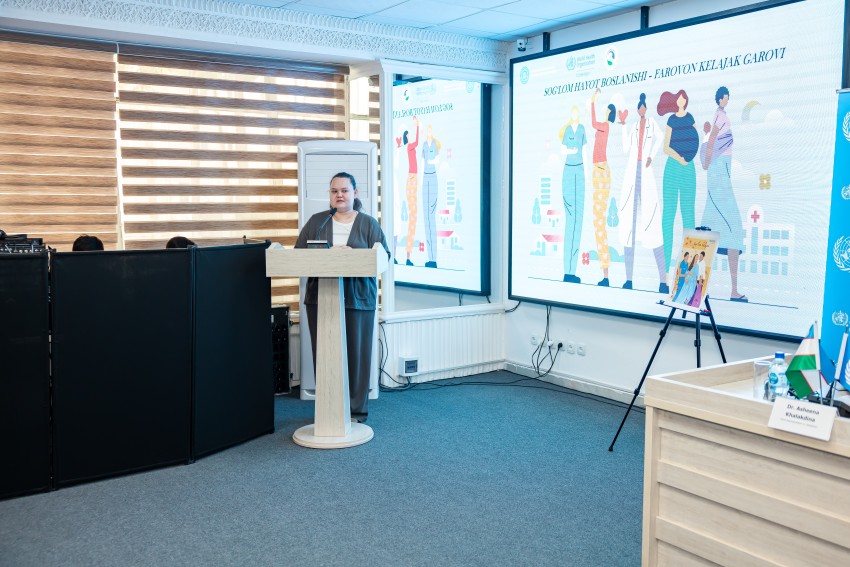An IUCN-led international partnership has launched the One Health Central Asia initiative, aiming to mitigate the risk of zoonoses – diseases that are naturally transmissible from animals to humans – in Central Asia.
The new initiative was announced today at the 14th Conference of the Parties to the Convention on Migratory Species of Wild Animals (CMS COP14), in the presence of government representatives from partnering countries – Kazakhstan, the Kyrgyz Republic, Tajikistan, Turkmenistan, and Uzbekistan, the host country.
“Nature conservation can contribute to mitigating the risk of zoonotic disease outbreaks. This important new initiative will strengthen the resilience of Central Asian landscapes, and bring numerous benefits to communities. We will continue to support the governments here to build regional capacity to apply IUCN's tools and standards, including the IUCN Green List, best practices in species management, and the latest advancements in zoonosis research,” said Dr Grethel Aguilar, IUCN Director General.
The risk of zoonotic diseases in Central Asia is exacerbated by biodiversity loss and changes in human-wildlife interactions. As part of the new initiative, IUCN and national and international partners, including all five Central Asian countries, will implement actions to prevent the emergence and spread of zoonotic diseases. The experts will work to consolidate a fair and effective regional network of protected and conserved areas, strengthen conservation measures and wildlife management for disease risk mitigation and promote the latest advancements in zoonosis research and technology.
“Over the past few years, we have observed how the spread of zoonotic diseases like COVID-19 can have a global impact. This has resulted in entire countries being demobilized, transportation connections being disrupted, an increase in food security issues, and massive socio-economic consequences,” said Aziz Abdukhakimov, Minister of Ecology, Environmental Protection, and Climate Change of Uzbekistan. “We are committed to expanding regional cooperation for sustainable management of protected natural areas, preserving unique biological diversity and contributing to the environmental balance in the Central Asian region, that will receive significant boost through this project on ne Health in nature conservation.” he added.
Supported by a €11 million contribution from the German Ministry for Environment, Nature Conservation Nuclear Safety and Consumer Protection (BMUV) via the International Climate Initiative (IKI), this major regional initiative will spearhead the One Health approach in Central Asia over the next six years. The initiative, entitled Enhancing landscape resilience to zoonotic disease emergence by consolidating nature conservation systems in Central Asia, will focus on the interconnectedness of human, animal, and environmental health, emphasising the need for a holistic approach to address complex challenges.
“Effective implementation of the One Health approach requires collaboration across all levels, from local to international. We are enthusiastic about supporting this comprehensive and ambitious initiative which promises to yield manifold benefits – including disease control, response and management – for the people, animals, and ecosystems of Central Asia,“ stressed Dr Bettina Hoffmann, Parliamentary State Secretary, Federal Ministry for the Environment, Nature Conservation, Nuclear Safety and Consumer Protection (BMUV).
The CMS COP14 under the banner of “Nature knows no borders”, emphasises the fact that border fences bisect migration routes and prevent animals from moving across landscapes. These, in combination with railways, pipelines, and other infrastructure, reduce ecological connectivity and ecosystem health, Central Asia being one of the most impacted regions.
"Obstacles to migration reduce the habitat available to migratory species. This phenomenon has been observed across Central Asia with species such as the Saiga, Wild Ass, and even those with relatively small ranges, like the Bukhara Deer. In the diminished and fragmented habitats, migratory species of wild animals often find themselves in contact and competition with livestock for pasture and water which heightens the risk of transmission of disease between these sectors to the detriment of both. Therefore, preserving habitat connectivity not only helps in mitigating the risk of disease outbreaks in wildlife but also reduces the transmission of diseases between wildlife and livestock, and decreases the risk of zoonotic diseases i.e. those affecting humans,” shared Amy Fraenkel, Executive Secretary of the Convention on the Conservation of Migratory Species of Wild Animals (CMS), one of the international partners of the One Health Central Asia initiative.















